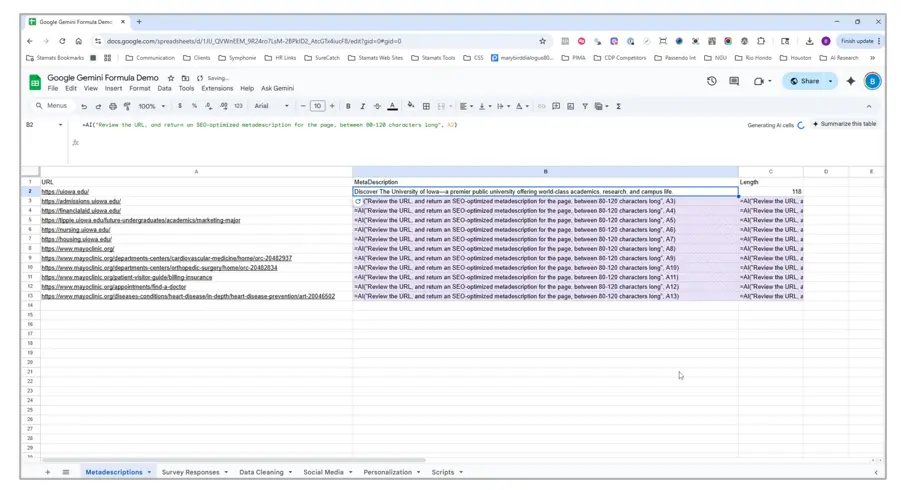Written by
on

A transformative shift is happening, and it’s not AI. The aisle between public relations and content marketing is rapidly narrowing. If you’re smart about the convergence, you can forever enhance your brand’s storytelling.
The goals and roles of content marketing and PR overlap more and more. The job descriptions look awfully similar. Shrinking budgets and a shrewd eye for efficiency mean you and your PR pals could face the chopping block if you don’t streamline operations and deliver on the company’s goals (because marketing communications is always first to be axed, right?).
Yikes. Let’s take a big, deep breath. This is not a threat. It’s an opportunity.
Reach across the aisle to PR and streamline content creation, improve distribution strategies, and get back to the heart of what you both are meant to do: Build strong relationships and tell impactful stories.
So, before you panic-post that open-to-work banner on LinkedIn, consider these tips from content marketing, PR, and journalism pros who’ve figured out how to thrive in an increasingly narrowing content ecosystem.
1. See journalists as your audience
Savvy pros know the ability to tell an impactful story — and support it with publish-ready collateral — grounds successful media relationships. As a content marketer, your skills in storytelling and connecting with audiences, including journalists, naturally support your PR pals’ media outreach.
Strategic storytelling creates content focused on what the audience needs and wants. Sharing content on your blog or social media builds relationships with journalists who source those channels for story ideas, event updates, and subject matter experts.
“Embedding PR strategies in your content marketing pieces informs your audience and can easily be picked up by media,” says Alex Sanchez, chief experience officer at BeWell, New Mexico’s Health Insurance Marketplace. “We have seen reporters do this many times, pulling stories from our blogs and putting them in the nightly news — most of the time without even reaching out to us.”
Kirby Winn, manager of PR at ImpactLife, says reporters and assignment editors are key consumers of their content. “And I don’t mean a news release that just hit their inbox. They’re going to our blog and consuming our stories, just like any other audience member,” he says. “Our organization has put more focus into content marketing in the past few years — it supports a media pitch so well and highlights the stories we have to tell.”
2. Learn the media outlet’s audience
Seventy-three percent of reporters say one-fourth or less of the stories pitched are relevant to their audiences, according to Cision’s 2024 State of the Media Report (registration required).
PR pros are known for building relationships with journalists, while content marketers thrive in building communities around content. Merge these best practices to build desirable content that works simultaneously for your target audience and the media’s audiences.
Acacia James, weekend producer/morning associate producer at WTOP radio in Washington, D.C., says sources who show they’re ready to share helpful, relevant content often win pitches for coverage. “In radio, we do a lot of research on who is listening to us, and we’re focused on a prototype called ‘Mike and Jen’ — normal, everyday people in Generation X … So when we get press releases and pitches, we ask, ‘How interested will Mike and Jen be in this story?’”
3. Deliver the full content package (and make journalists’ jobs easier)
Cranking out content to their media outlet’s standards has never been tougher for journalists. Newsrooms are significantly understaffed, and anything you can do to make their lives easier will be appreciated and potentially rewarded with coverage. Content marketers are built to think about all the elements to tell the story through multiple mediums and channels.
“Today’s content marketing pretty much provides a package to the media outlet,” says So Young Pak, director of media relations at MedStar Washington Hospital Center. “PR is doing a lot of storytelling work in advance of media publication. We (and content marketing) work together to provide the elements to go with each story—photos, subject matter experts, patients, videos, and data points, if needed.”
4. Unite great minds to maximize efficiency
Everyone needs to set aside the debate about which team—PR or content marketing—gets credit for the resulting media coverage.
Regular, cross-team meetings are essential to understand the best channels for reaching key audiences, including the media. A story that began life as a press release might reap SEO and earned media gold if it’s strategized as a blog, video, and media pitch.
“At Intermountain Health, we have individual teams for media relations, marketing, social media, and hospital communications. That setup works well because it allows us to bring in the people who are the given experts in those areas,” says Jason Carlton, APR, Marketing Manager at Intermountain Health. “Together, we decide if a story is best for the blog, a media pitch, or a mix of channels—that way, we avoid duplicating work and the risk of diluting the story’s impact.”
As Robby Stein, VP of Product, Google Search was quoted in a Search Engine Land article, “Because you are no longer just optimizing to be ranked – you’re optimizing to be recommended.”
5. Measure what matters
Cutting through the noise to earn media mentions requires keen attention to metrics. Since content marketing and PR metrics overlap, synthesizing the data in your team meetings can save time while streamlining your storytelling efforts.
“For content marketers, using analytical tools such as GA4 can help measure the effectiveness of their content campaigns and landing pages to determine meaningful KPIs such as organic traffic, keyword rankings, lead generation, and conversion rates,” says John Martino, director of digital marketing for Visiting Angels. “PR teams can use media coverage and social interactions to assess user engagement and brand awareness. A unified and omnichannel approach can help both teams demonstrate their value in enhancing brand visibility, engagement, and overall business success.”
To track your shared goals, launch a shared dashboard that helps tell the combined “story of your stories” to internal and executive teams. Among the metrics to monitor:
- Page views
- Earned media mentions
- Organic search queries
- On-page actions
But perhaps the biggest metric to track is team satisfaction. Who on the collaborative team had the most fun writing blogs, producing videos, or calling the news stations? Lean into the natural skills and passions of your team members to distribute work properly, maximize the team output, and improve relationships with the media, your audience, and internal teams.
Don’t fear the merger
Whether you deliberately work together or not, content marketing and public relations are tied together. ImpactLife’s Kirby Winn explains, “As soon as we begin to talk about (ourselves) to a reporter who doesn’t know us, they are certainly going to check out our stories.”
But consciously uniting PR and content marketing will ease the challenges you both face. Working together allows you to save time, eliminate duplicate work, and gain free time to tell more stories and drive them into impactful media placements.
Get even more insights from Mariah and these content marketing and public relations experts. Read the full article at Content Marketing Institute.
Related reading: AI, Oh My! How Content Marketers Grapple with the Robot Invasion and More Lessons from CMWorld



Leave a Reply
You must be logged in to post a comment.